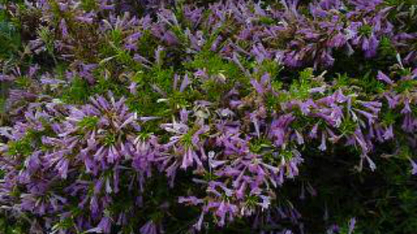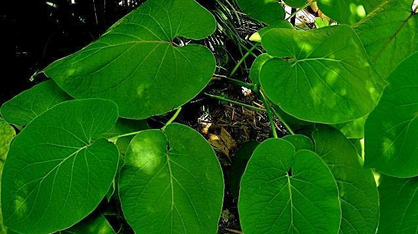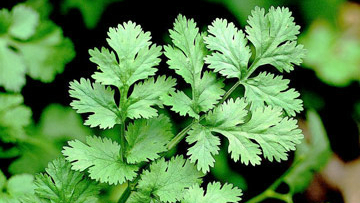It’s always fantastic when you have plants that look beautiful in
the garden, and work really well in the kitchen. For readers who
enjoy Mexican cooking, the good news is that three of the top four
Mexican culinary herbs fall in this culinary/horticultural category:
Mexican oregano, hoya santa, Mexican marigold mint and cilantro.
Mexican oregano (Poliomentha longiflora) is an evergreen that
grows three feet tall, and blooms with a light pink to lavender
flower from spring to frost. This flowering perennial has a spicy
oregano flavor and can be quite drought-tolerant when established.
It can look beautiful in a landscape with salvias, lantanas, and
Mexican mint marigold. (in stock: $3.59: 4" pot; $7.99: 1 gal.)
Hoya santa (Piper auritum) is a large leaf herbaceous perennial
herb that has a curious root beer flavor to its leaf .This plant can
grow from full shade to full sun depending on how much water it
gets. Its large leaf and size will give a tropical look to the land-
scape. The leaves are used to wrap fish fillets or chicken breasts
which you then bake in the oven or steam. (in stock: 1 gal: $9.99)
In Mexico, its leaves are an essential ingredient in green mole, In
Guatemala, it is used to make traditional tamales wrapped in bana-
na leaves. Hoya santa is popular along the east coast of Mexico.
Closer to home, you can find it on the menu of the excellent
Mexican mint marigold: (Tagetes lucida) grows from spring to
fall and has an anise flavor to its leaf. This perennial is easily
grown, blooms heavily in the fall, and is a good substitute in
recipes for the more fussy French tarragon – which can be very
difficult to cultivate. (in stock: $3.59: 4" pot; $7.99: 1 gal.)
Cilantro (Coriandrum sativum) may not be the best plant for your
landscape, but this essential Mexican herb is easily grown if you
pick the right season. It loves the cooler weather of fall and winter.
Planted in late September or early October, it will flourish and then
produce flavorful leaves throughout the winter.
Cilantro will, however, bolt and bloom in the spring, ending its life
cycle. For a heat-tolerant plant which has a similar flavor you might
try Vietnamese cilantro, known as Rau Rum. This plant thrives in the
heat. Buen provecho. . . and of course, Happy Gardening!








